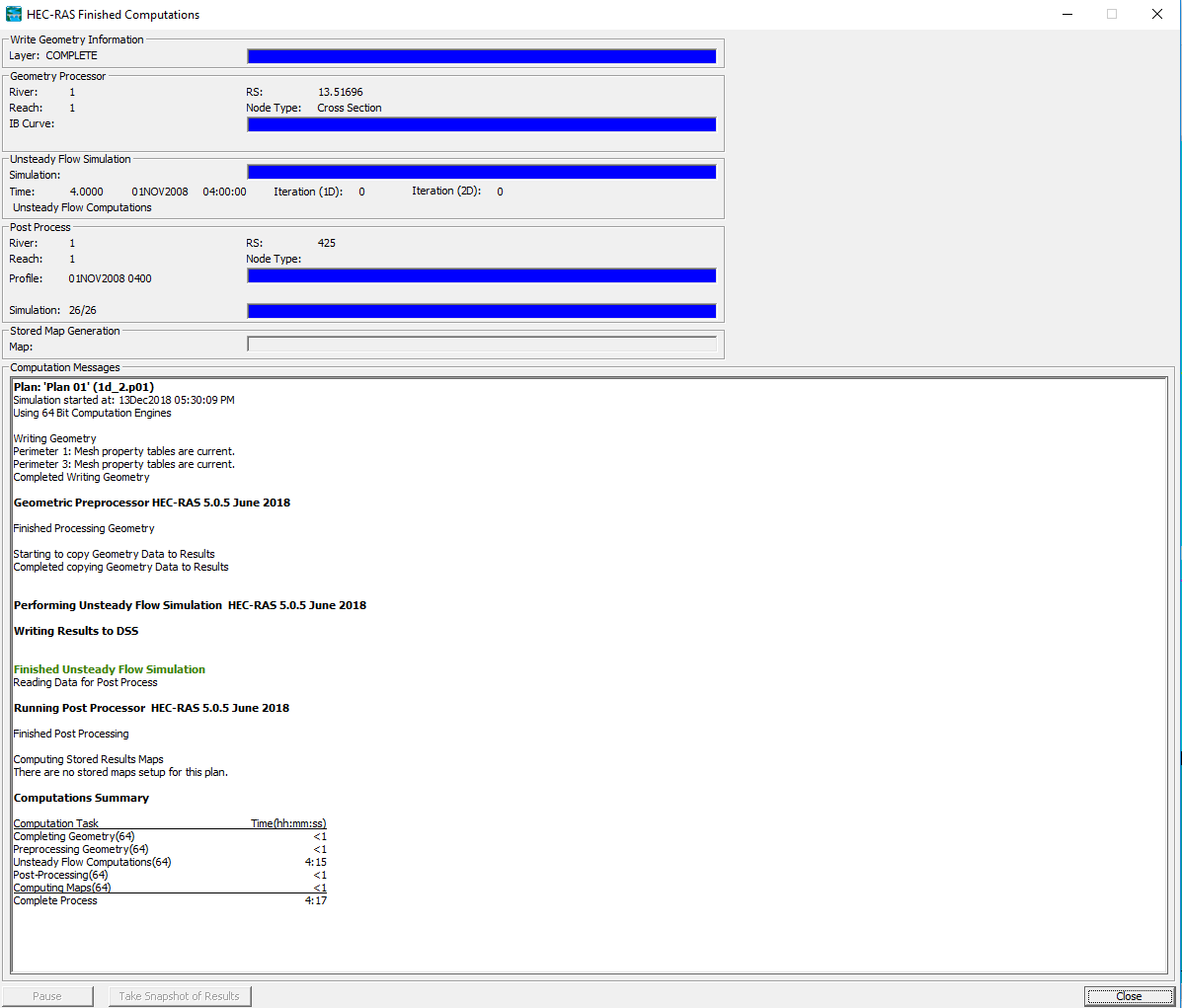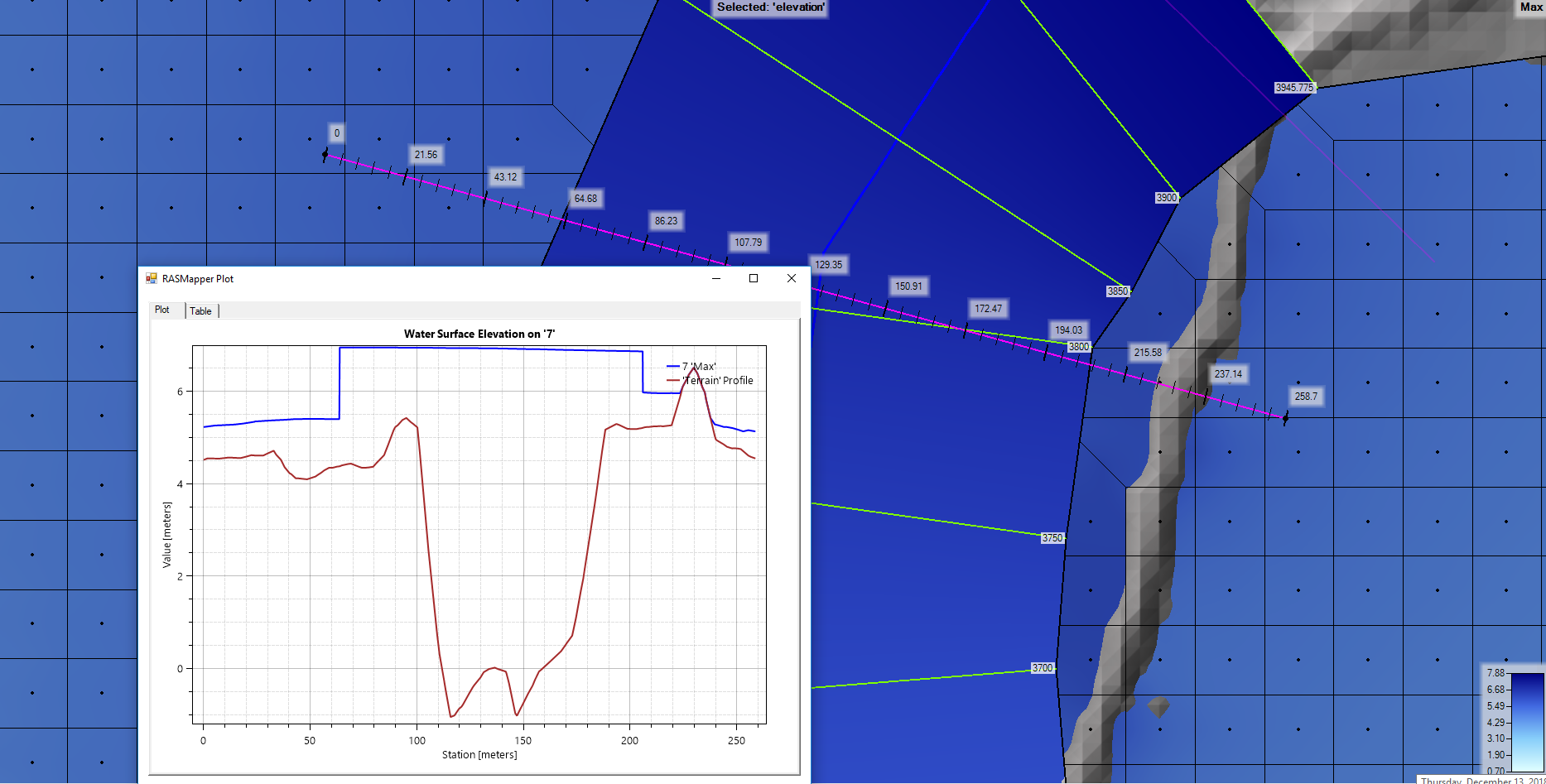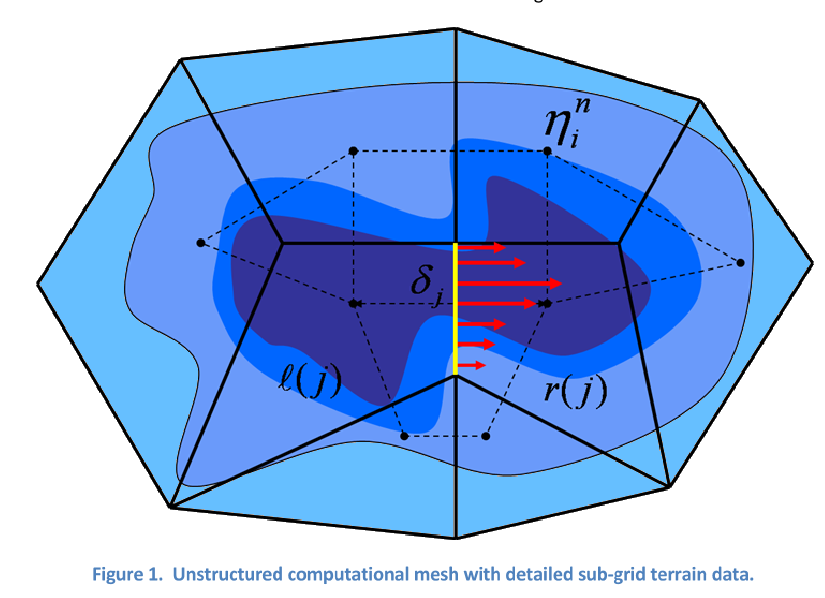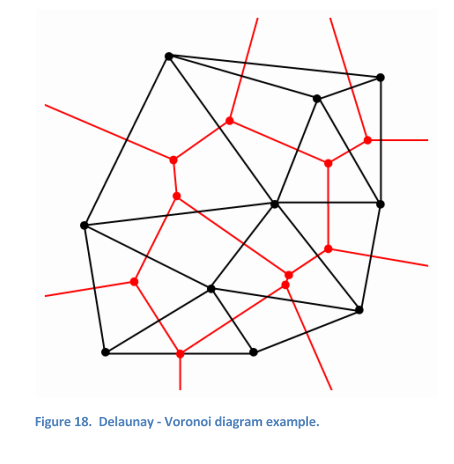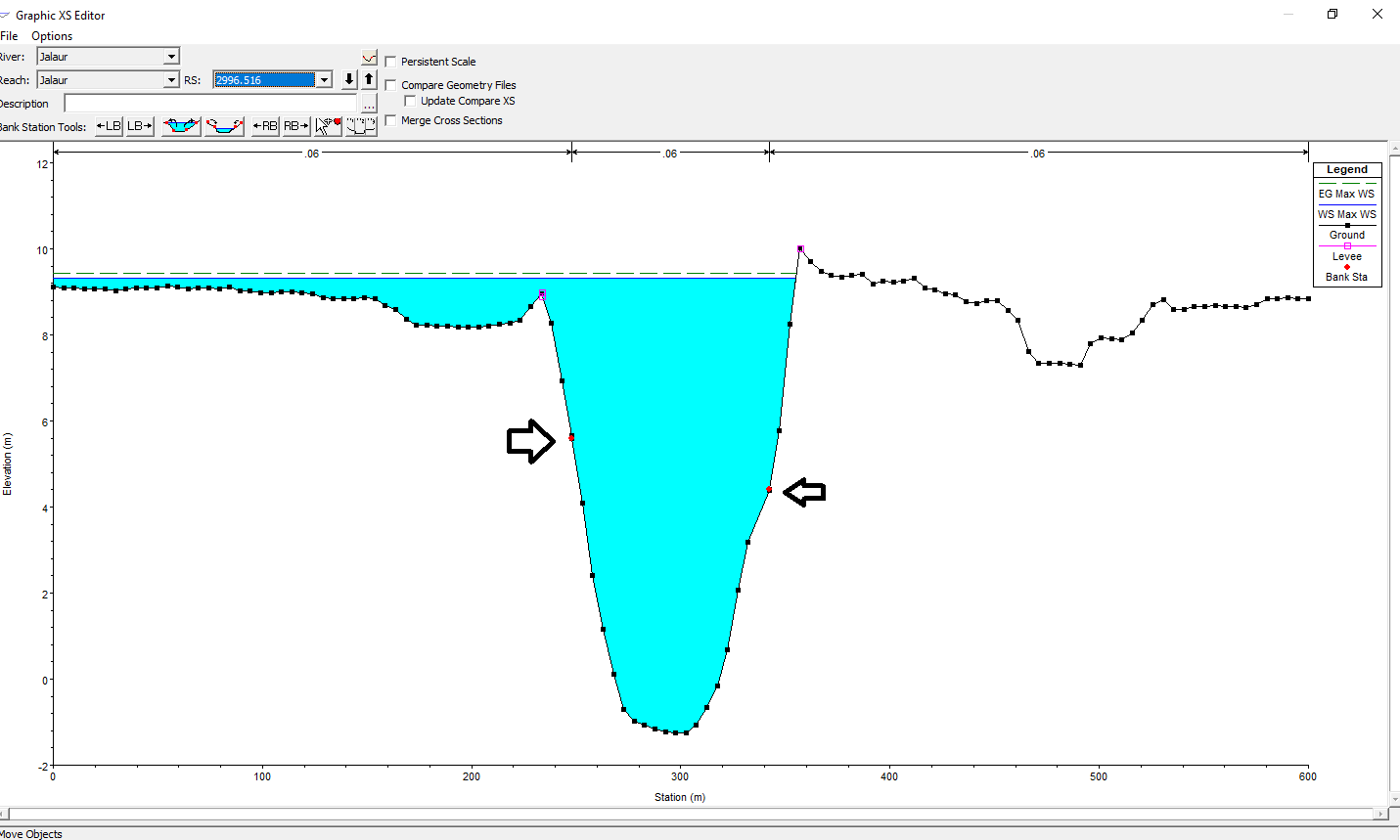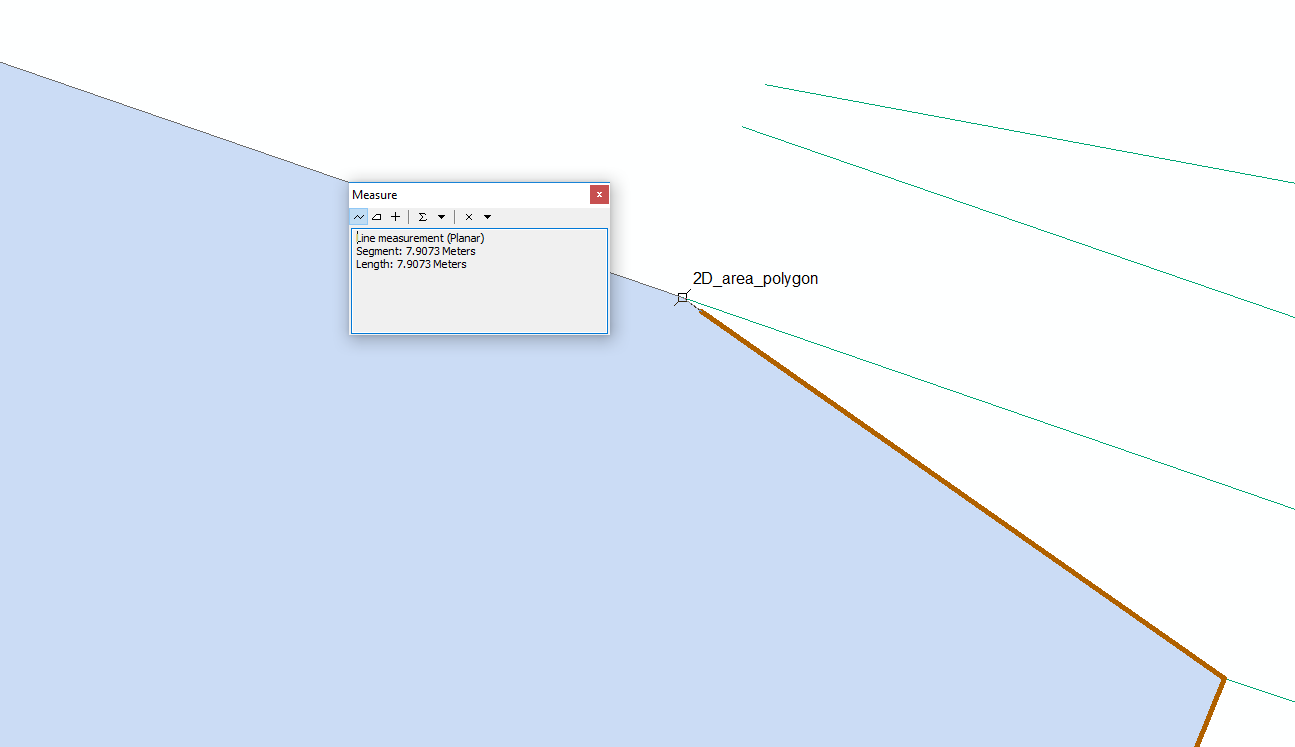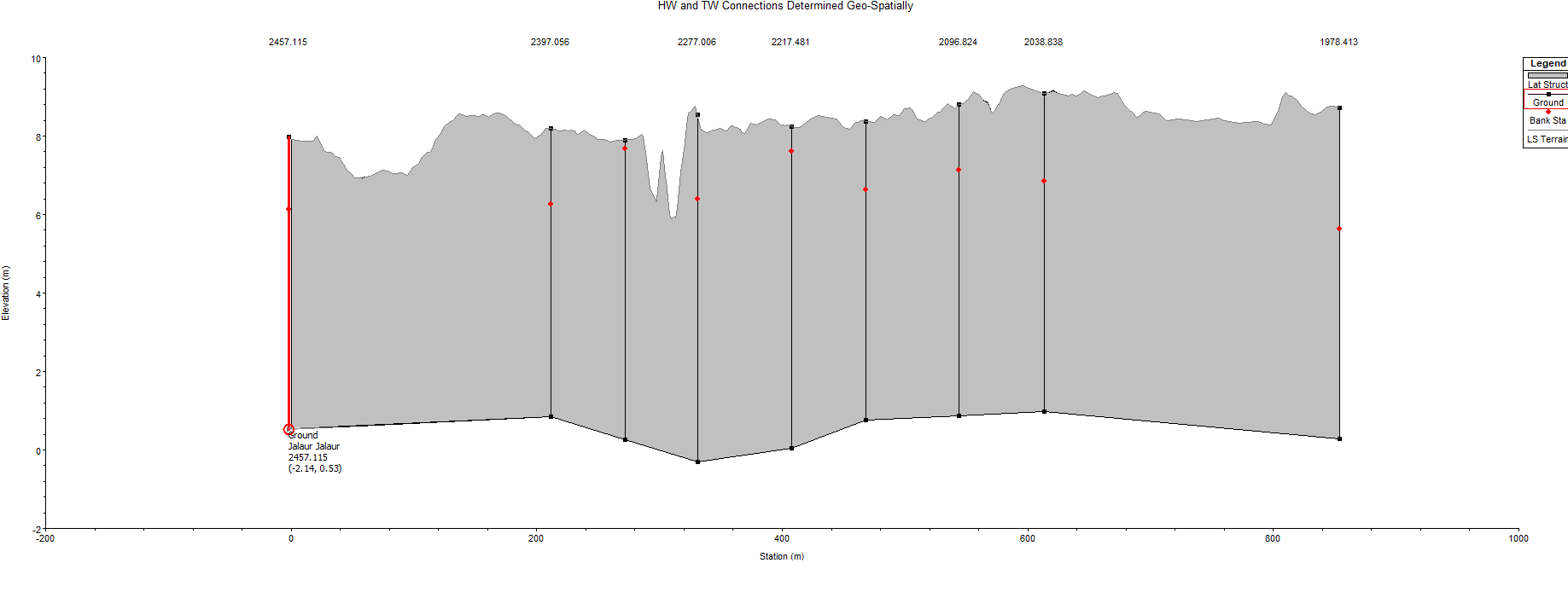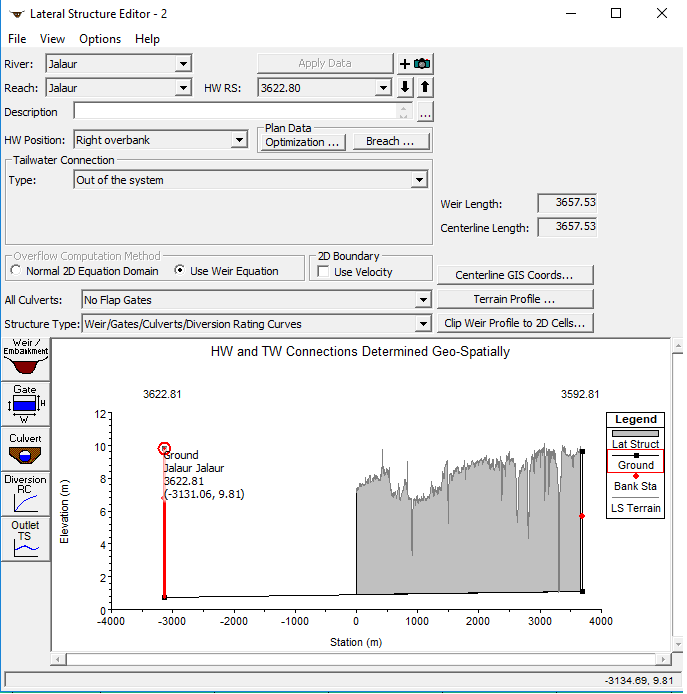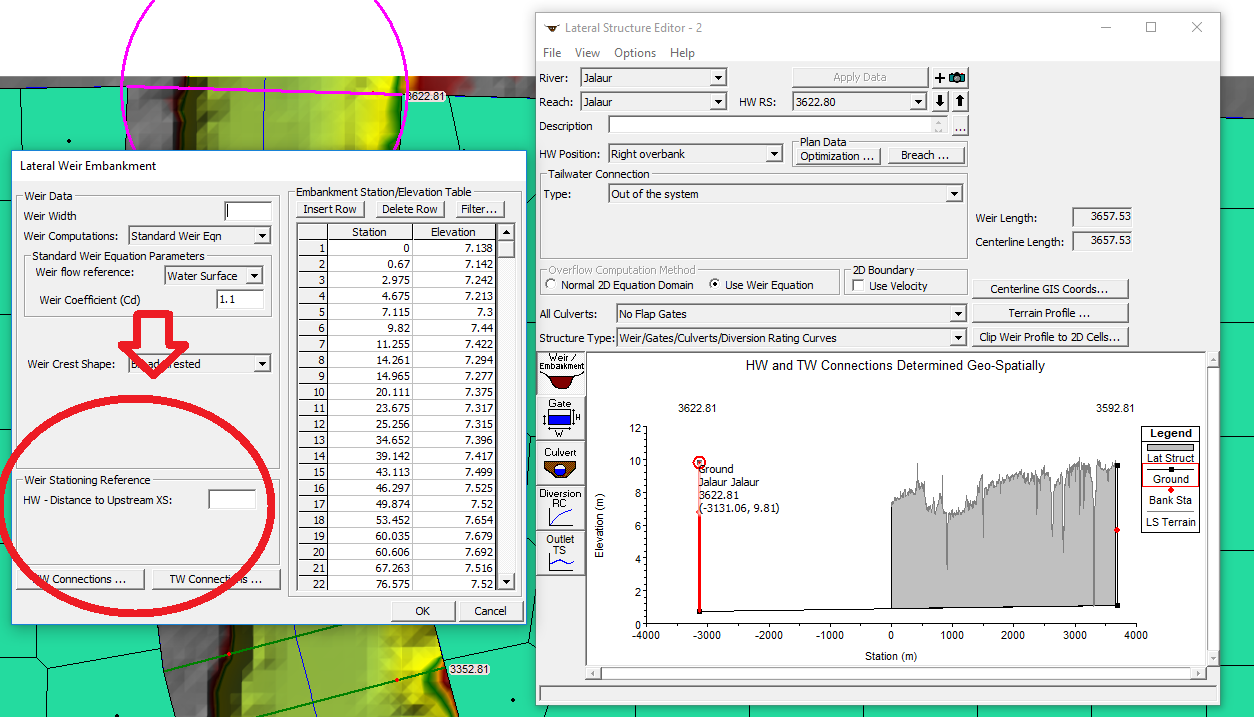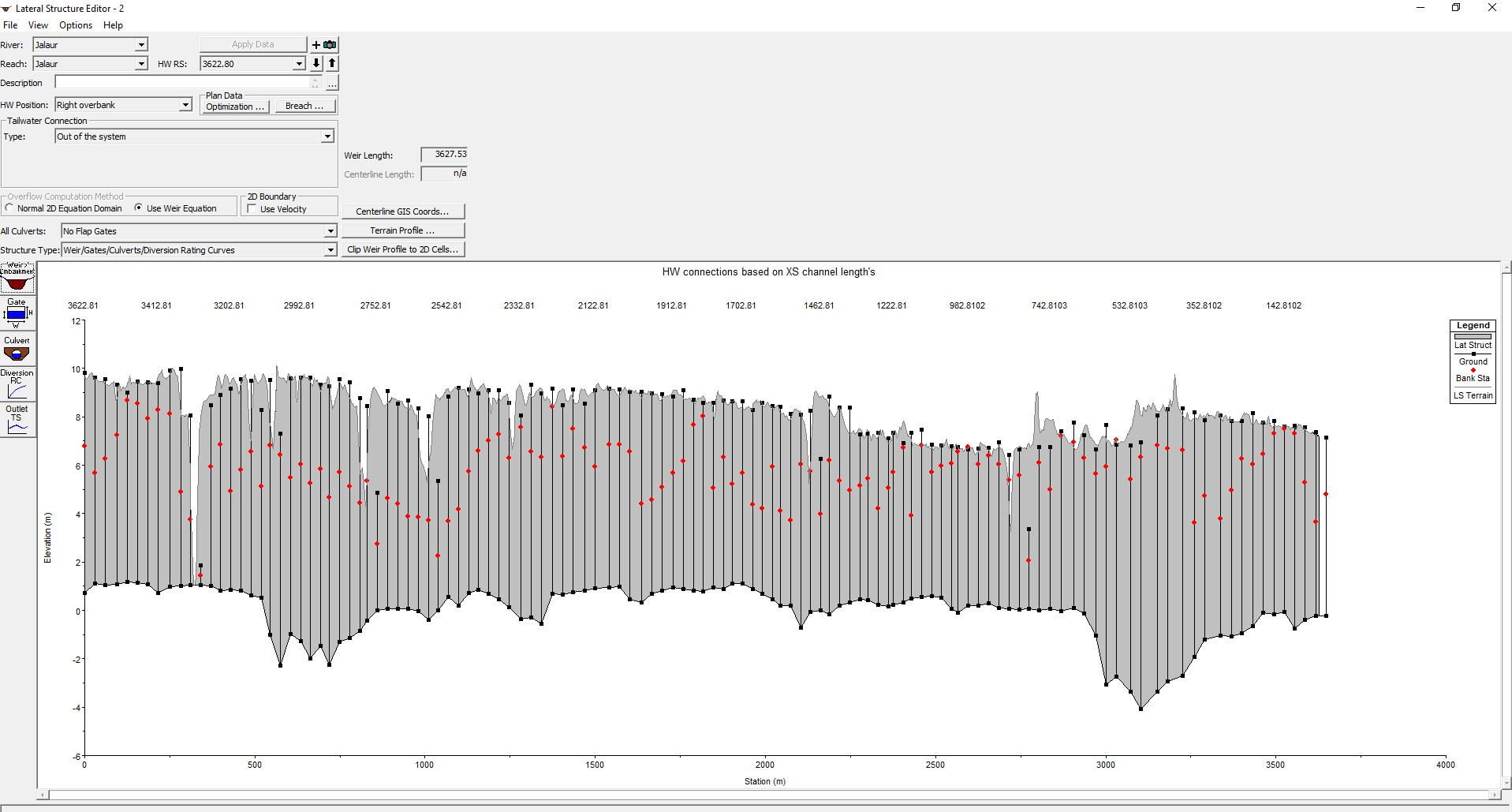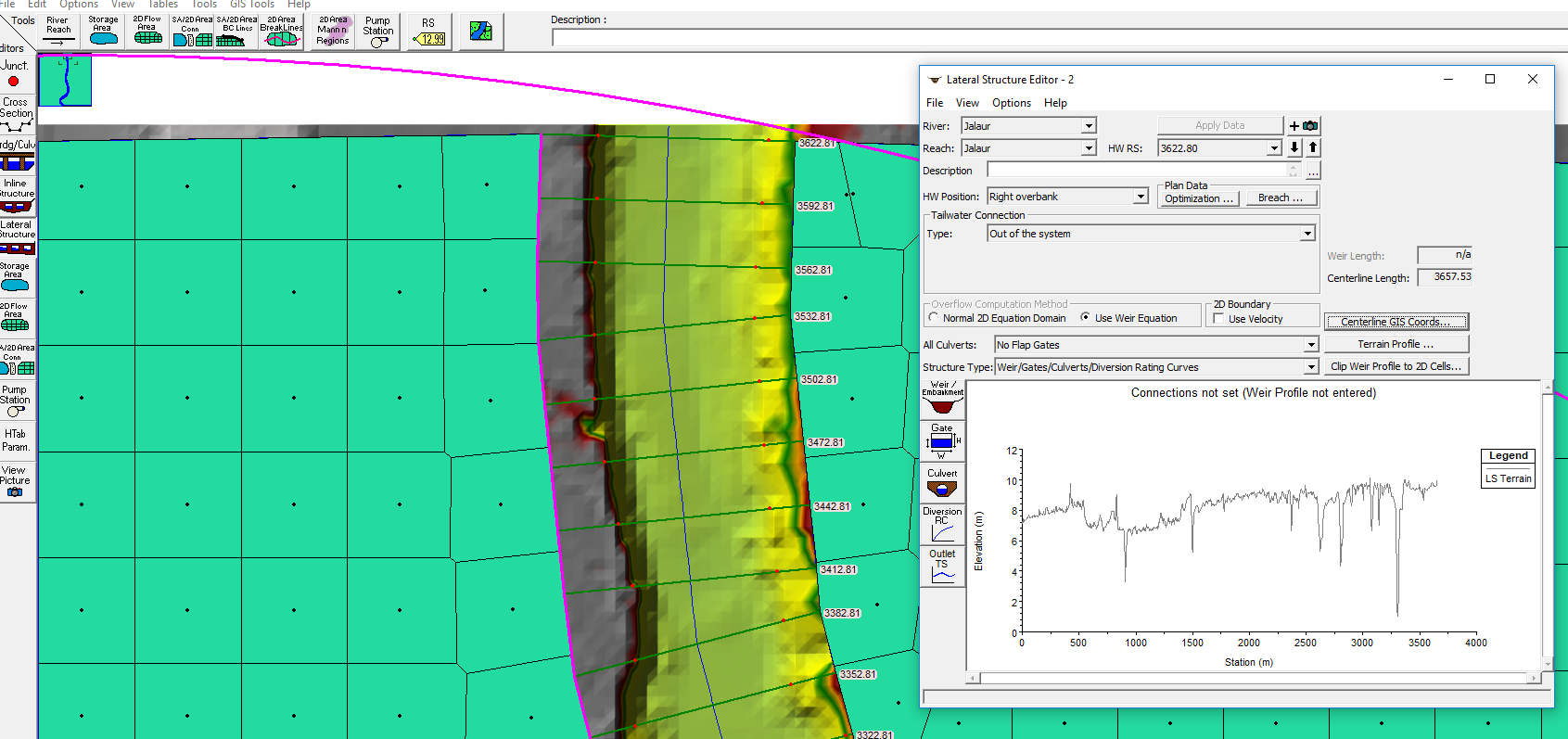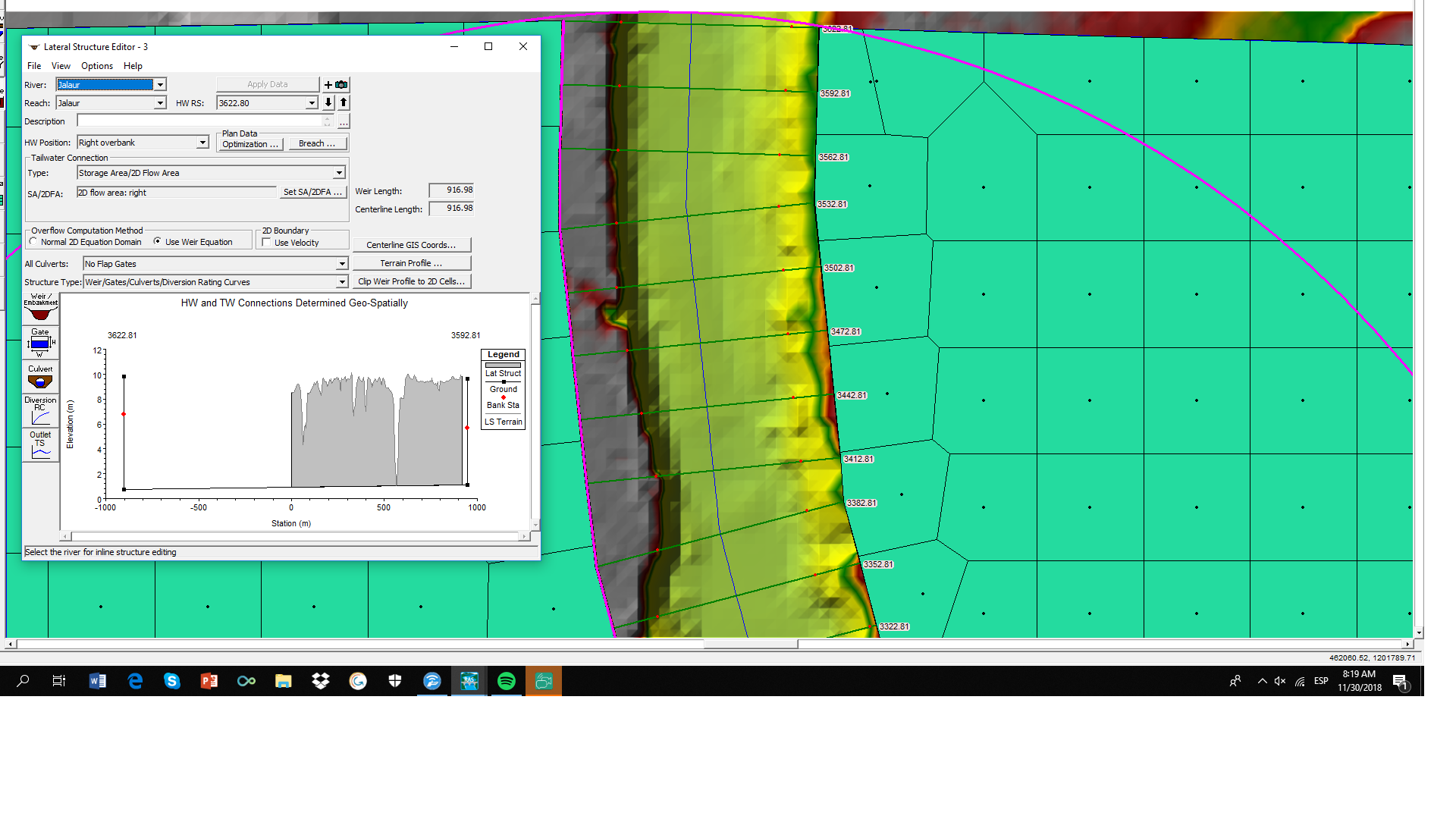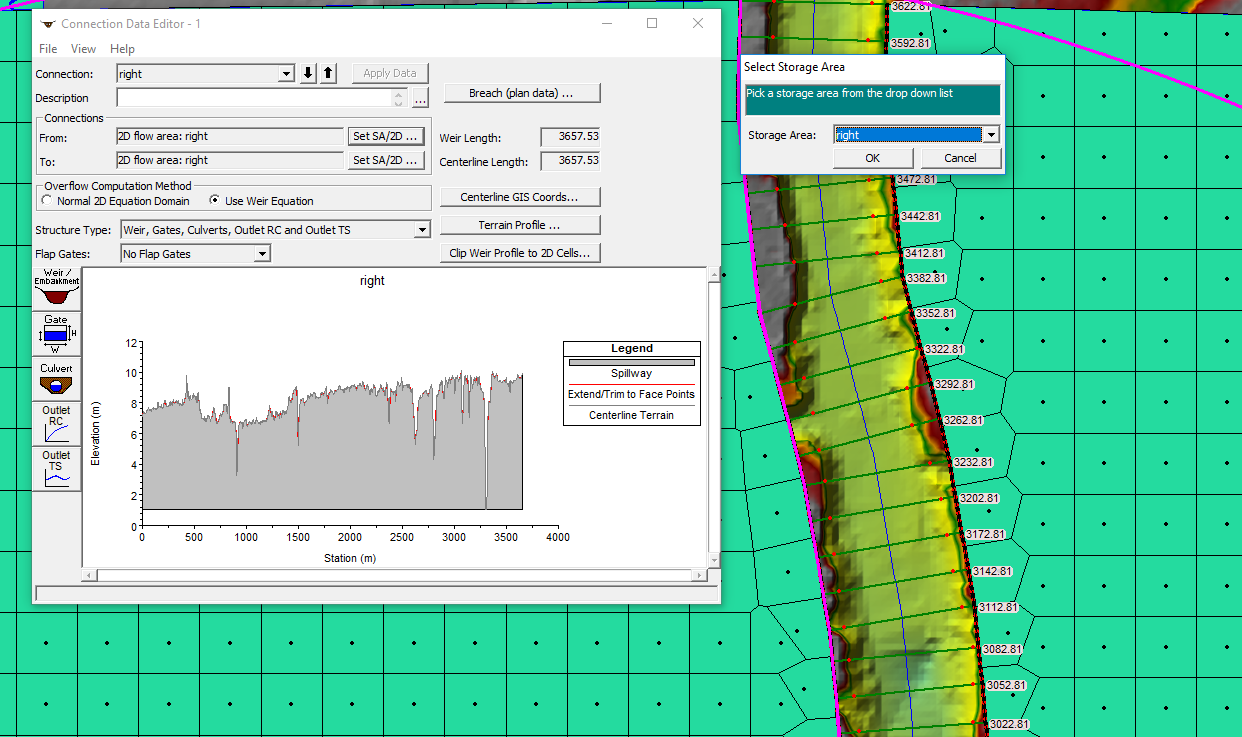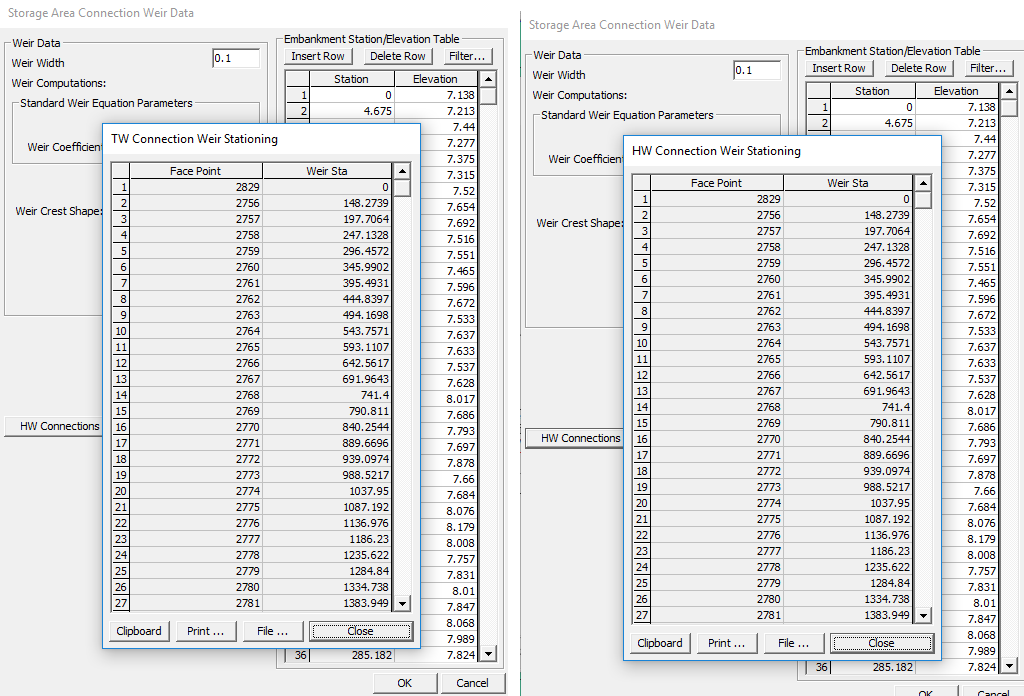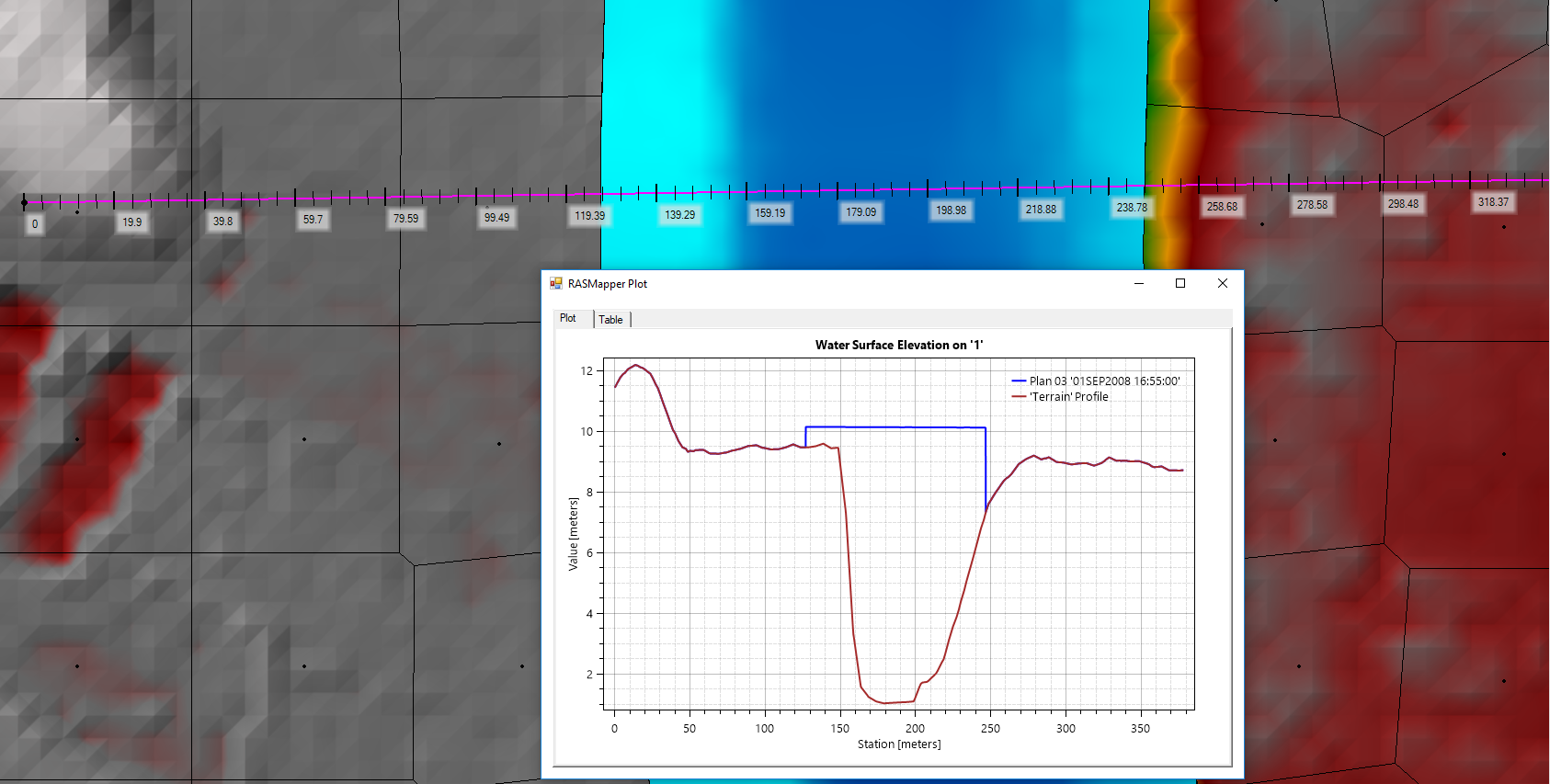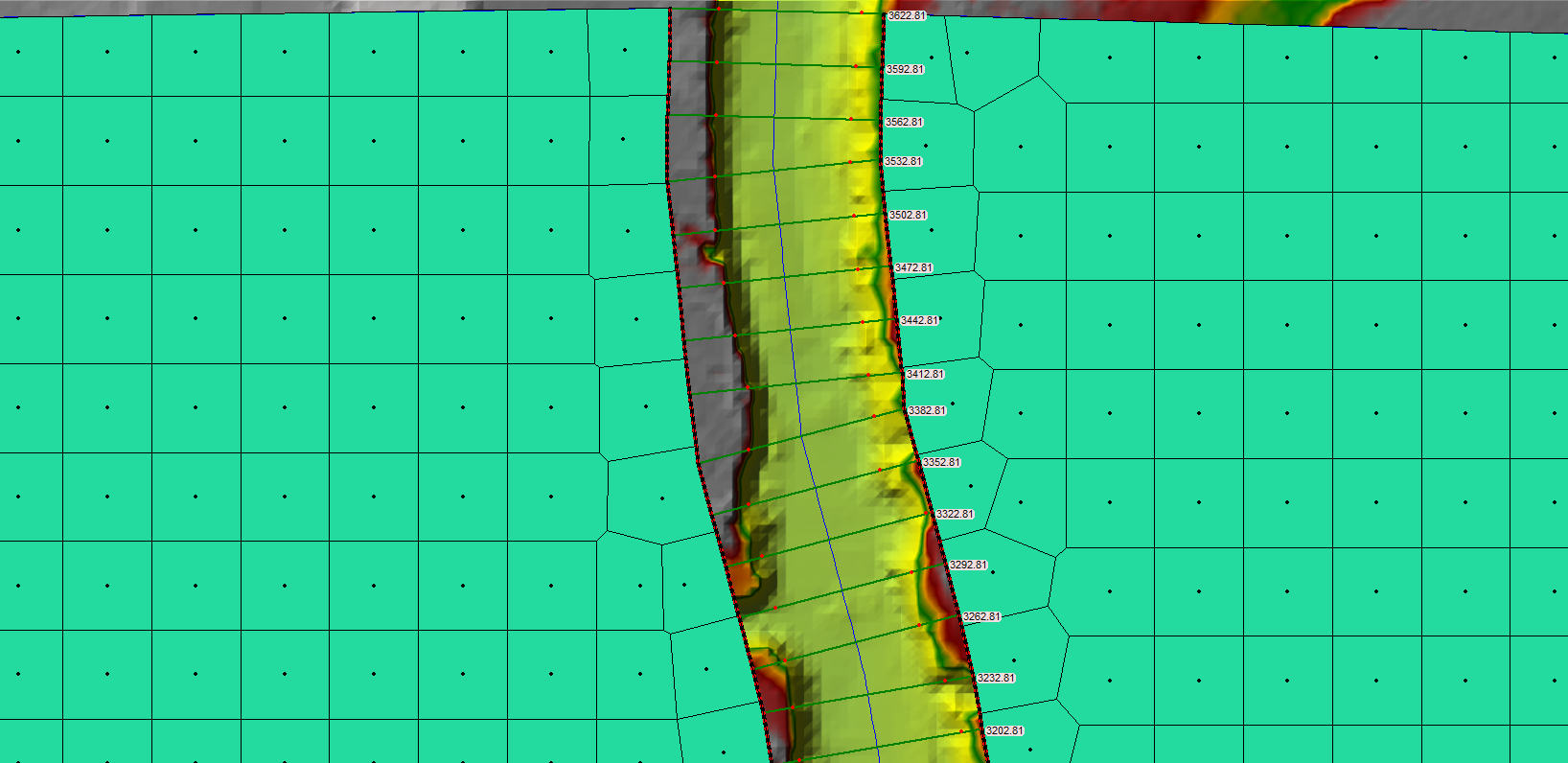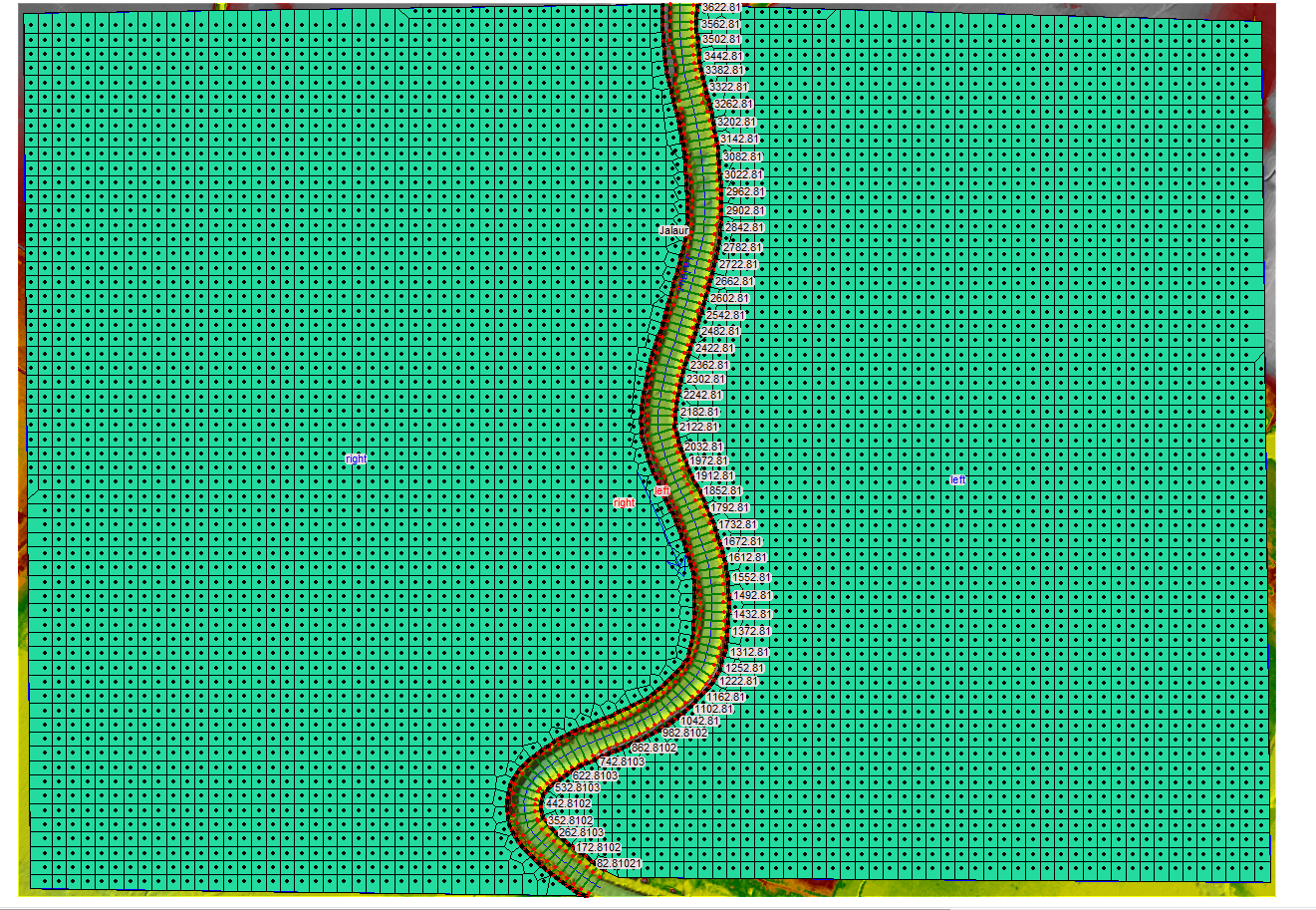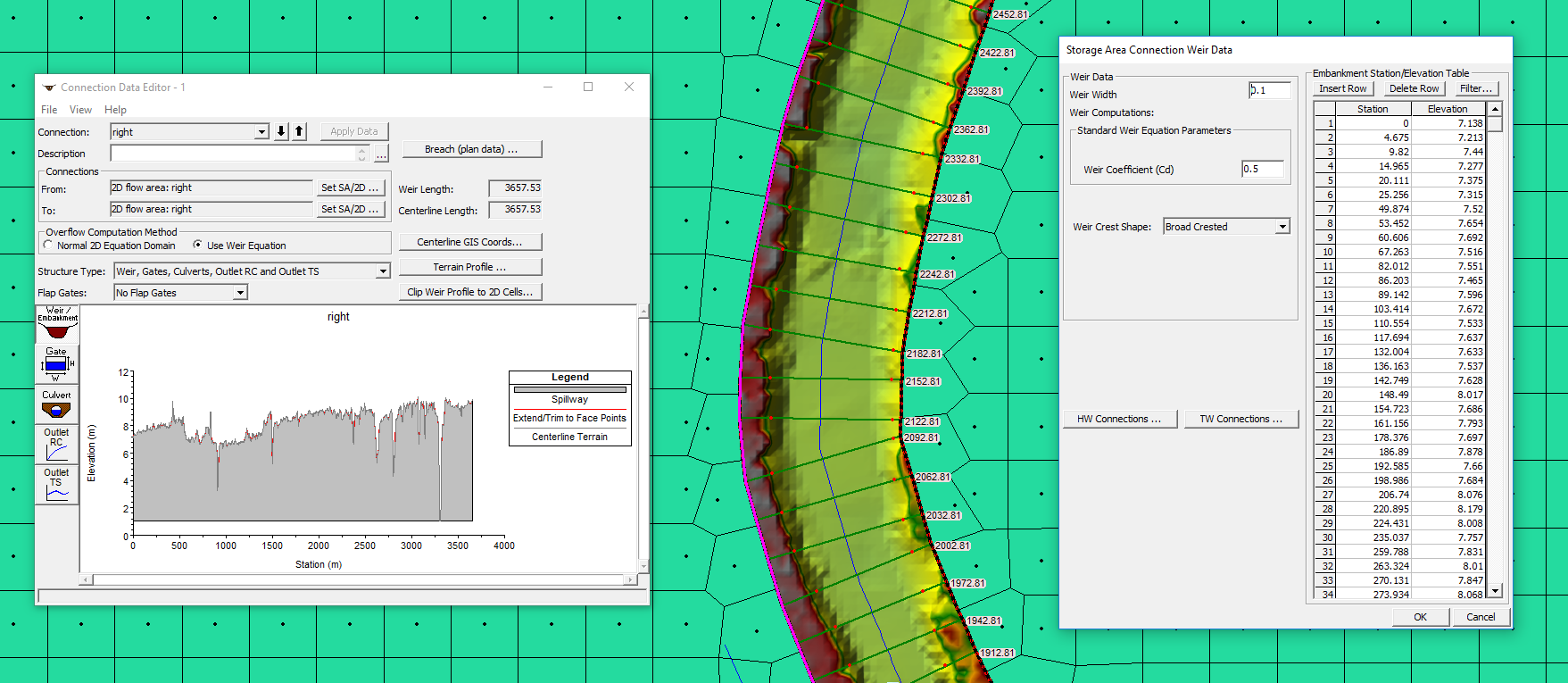Forum Replies Created
-
AuthorPosts
-
SaraAParticipant
Hi Scott,
Yes, my tributaries are in the 2D area of my model.
Thank you for the help,
Regards,
Sara
SaraAParticipantHi Scott,
Reading the User’s manual of HEC-RAS 5.0, I found on chapter 6.87 (page 169): The last selection (crest shape) is when there really is no weir, and flow is just travelling overland. This is called “Zero Height” weir.
Also, Chris states in the blog (Weir Equations in HEC-RAS): Zero-height weirs are used for cases where flow will leave a channel laterally, but there is no defined obstruction or hydraulic control separating the two. Commonly this is used to simulate flow from the main channel up a tributary that is being modelled using a lateral structure and a storage or 2D area.
Where did you read is recommended to use broad crested weir?
Thank you,
Regards,
Sara
SaraAParticipantHi Scott,
I read the comment of Toby and the reply of Chris. Good tips!
however, I have one question in how to incorporate this advice in my model. Chris states:
Do not have cells adjacent to the lateral structure that reside completely on the slope of the levee/berm/whatever you’re modelling with the lateral structure. I typically like to take the cross sections right to the peak of the high ground feature, but start my 2D cells at the toe of the feature.
If I imported my LS as a georeferenced line from GIS following the high ground, and the connection between the LS in HW and TW is done automatically, how I can ensure connecting the LS with the toe of the LS for the TW connection?
Relate to the other data, I also read in the same post that if you select Zero Height as a shape of the crest, you should not use a coefficient too low (0.2) for non-overbanked terrain. This value for the coefficient (0.2, for example) is only used with the Broad crested standard equation. If you select Zero Height, you should use Hager’s equation, but, for that equation, you need also the weir average height and the average bed slope…I suppose you can estimate that in a GIS software but it looks very time-consuming considering you have several LS at both sides.
Which option you recommend…(1). use the Zero Height and the Hager’s equation, or (2). the non-overbanked coefficient (low) and the broad crested standard equation?
Do you know if the bug to which Chris refers about the use of Zero height and the Standard equation has been already solved?Thank you,
Best regards,
Sara
SaraAParticipantHi Scott,
though I could connect the 1D and 2D area with the LS and I could transfer water to the 2D area, still my results look not correct.
I could run the model with success, as you can see in the image without errors (I did not change the tolerances, I only changed the maximum iterations 1D/2D to 20):
However, when I checked the results you can see a difference of approx. 1.55m between the WSE in the channel and in the 2D area in the same profile. I changed the coefficient of the weir to 0.2 as it is terrain and it got submerged.
Could you give some advice which more parts of the model should I checked?
Thank you,
Best Regards,
Sara
SaraAParticipantHi Scott,
Thank you for the information about the generation and refinement of the mesh, but here it is the “smaller” mesh to which I refer (see image). You have the mesh that you generated (the blue one) and the second one (subgrid, the dash black one) generated by the Voronoi technique. This dash black grid captures the terrain than the blue one is not capable due to a higher size. The blue one is the one you define with the cell spacing and the dash black line is the one you use for calculation as I understood.
I took the images from the document Combined 1D and 2D modelling with HEC-RAS, and also this document states on page 30. HEC-RAS make the computational mesh by following the Delaunay Triangulation Technique and then constructing a Voronoi Diagram (see image).
Thank you,
Regards,
SaraAParticipantHi Luis,
For my understanding, the banklines are used to differentiate the main channel from the floodplain area. For your message I understand that I should move the banklines to the lowest point to the cross-section to represent well the longitudinal profile of the river, this means, move the bankline to the bed of my channel where more or less I have located the centerline of the river.
I think I do not get your message well. I attached an image where you can see the location of the bank stations for one my cross-section in the model, but I did not understand where I should move them from your message.
Best regards,
SaraAParticipantHi Scott,
Thank you for the tip of the refinement region.
I am trying to analyze 2D in deep and I would like to know if there is a way to see the calculation mesh in HEC-RAS. As I read in some documents, a smaller 2D mesh (subgrid) is generated by Voronoi technique from the 2D mesh cell size that you defined, and this smaller 2D mesh is the one using for calculation.
Do you know if it is possible to see in HEC-RAS the mesh used for the computations? (not the one you define)
Thank you,
Regards,
Sara
SaraAParticipantHi Scott,
I could solve the problem. It was an issue of dates. My first hour started on 31 August 2018, this was creating problems with my computer that it is in Spanish (Agosto). I changed the days and it works.
There was also an issue in the base flow. I did not put any initial flow and HEC-RAS was iterating up to maximum (20) when I changed that I re-run without errors.
Thank you,
Regards,
Sara
SaraAParticipantHi Scott,
Thank you for the clarification.
I was wondering how HEC-RAS computes the distance to the upstream XS of my LS.
In ArcMap the distance I get is 7.90m (measuring along the centerline of the structure).
However, in HEC-RAS, the cross section is located 2.14m upstream.
Is this because the distance is not estimated along the lateral structure centerline, if not between river centerline or bank lines centerline?
One last question, is it possible to enforce the 2D mesh to the lateral structure? I only saw the option for a breakline.
Thank you,
Best Regards,
SaraAParticipantHi Scott,
Thank you so much for the help these days. I read carefully the User’s manual and with your tips, I could solve finally the problem with the connections. I did with a smaller LS.
The problem indeed is that I was defining the GIS centerline coordinates from downstream to upstream. I also have clear the difference with the river stationing and weir stationing that are not the same, and for the weir are relatives. Now it is clear the negative number (for the upstream cross-section of the LS) we were speaking about, as it refers to this relative zero of the weir.
I only have one question related to a statement I read in the User’s Manual: The user enters stations/elevations from the upstream end to the downstream end of the LS. Everything below these elevations will be filled in to the ground…
What does this sentence mean? which elevations are filled? as I am trying to represent the real terrain. I do not want to fill any elevation between upstream and downstream ends of the LS.
Thank you,
Regards,
Sara
SaraAParticipantHi Scott and Luis,
I tried to follow your indications, Scott; but I have some doubts.
I will explain you step by step what I did with images:
1) I created a lateral structure with the name (river station) 3622.80, 1 mm downstream of the most upstream cross-section (most upstream river station = 3622.81). I copied also the coordinates of a centerline from GIS (Centerline GIS Coords…) that starts just in the most upstream cross-section 3622.81 and finishes in the most downstream cross-section. This centerline coordinates does not start at 3622.80 with my lateral structure, if not 1mm upstream at 3622.81.
My ls editor looks like this
2) I copied the terrain of this centerline (Terrain profile) into the Weir/Embankment editor, and my image looks with the problem I had before where all the terrain is located between the two most upstream cross-sections. I took note of the negative coordinate that you refer (-3131.06, see image below), however, I do not know what this exactly means because the difference between my cross-section station and this number (3622.80-3131.06 = 491.74) is very high, and not the 1mm downstream where I want to locate the LS
4) Now I suppose to write this value into the HW – Distance to upstream? (marked in red) (because this is the real distance?)
…I do not have clear how to continue with this.
The only solution I found to make all the terrain appears along the cross sections is to delete the GIS coordinates of the line from the Centerline Gis Coords.. button and copy once more the terrain into the Weir/Embankment editor to make the LS terrain matches with the Lat Strut.
and once more I have the problems with the Weir, Cell elevation …but now in more cells… 🙁
Any more tips?
Thank you so much,
Sara
SaraAParticipantHi Luis and Scott,
Thank you for your help!!
I tried with a lateral structure the connexion between 1D and 2D without success. I imported a georeferenced line from GIS with the coordinates. After, I copied the Terrain Profile under this georeferenced line and copy it into the weir/elevation data. As you can see in the image, the plot of the terrain is putting all the terrain for the completed line concentrated between the HW cross-section of my lateral structure (3622.81) and the next one (3592.81). The plot of the lateral structure does not show all the cross-sections to which my lateral structure cross.
Do you know how may I solve this problem?
Also when I tried with the breakline in which the terrain looks well…how can I connect it with the 1D? In the interface of the breakline editor, the only connexion available that I can see is to the 2D area. I checked the HW and the TW connections Luis, and you are right, both are the same…but how can I connect to the 1D?
Thank you for all your help,
Sara
SaraAParticipantHi Luis,
Should I consider more things related to the connexion than the last image I sent where the breakline is connected to the 2D area? Should it not be connected to the 1D? How can I do that? (The only way I saw it is creating a lateral structure, not a breakline… though the interfaces of both look similar)
As you can see in the image, the water does not flow from the 1D to the 2D and I can not find why this happens or why they are not correctly connected.
Thank you,
SaraAParticipantHi Luis and Cameron,
This how looks my conexions in the upstream part of my river
and this how looks the complete model…the breakline is continuous as I said (3km lenght) and I could solve the issues of the cell/weir elevation discrepancies making only three slight modifications of mm in the weir/elevation table.
and finally, this is how looks the conexion of my breakline with the 2D area on the right.
When I ran the model, the results I got are very weird, with water level elevations of 150 m in the most upstream, like there is not a connection between the 1D and 2D area…
Could some of you give me an insight in which is there my error?
Should I put a boundary condition in the 2D area to allow the water flows out of the area (for example a normal depth)?
At the moment, I only have two boundary conditions upstream (hydrogram for 66 hours) and downstream of the river (critical depth, normal depth = 0.1)Thank you,
Sara
SaraAParticipantHi Luis,
I am trying to upload pictures…but I could not fin the bottom in this forum! I also tried copy and paste…but not works….how can I do it?
Regards,
Sara
-
AuthorPosts
